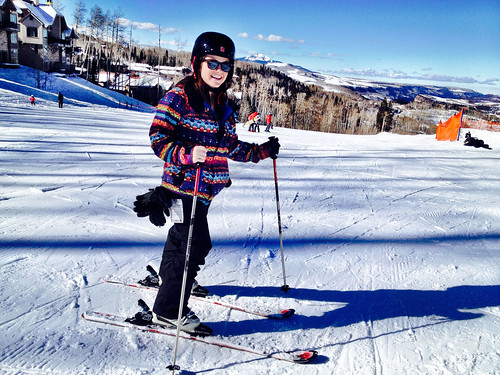
A new year means new resolutions and new adventures to embark upon. As many of you sit down to contemplate your goals of the year, I would like to suggest learning to ski or snowboard on national forests.
January is Learn to Ski and Snowboard Month, which means that on many resorts learning now can be the easiest and most affordable time to head to a forest near you. The U.S. Forest Service is host to 122 ski areas. The most visited forest, the White River National Forest, has 12 ski areas.
Last winter, I ventured onto the Uncompahgre National Forest in Colorado as a true beginner to the sport of skiing. Even today, I can vividly recall the distinctive “click” as my boots locked into my rental skis for the first time. As I looked around at the other skiers and snowboarders effortlessly cruising on the crisp high-country powder I became excited. I knew I would soon be like them, schussing effortlessly down the mountain. Or so I thought.
As Colorado’s newest resident, I had to see for myself what it takes to be a skier. Looking around the ski area, I saw children fly past me without ski poles and seasoned experts sliding off the lift with a graceful ease before gliding down the slopes – backwards.
I could only imagine how they looked at me. I wobbled back and forth trying just to stand. At that moment I thanked myself for the wisdom to seek out lessons from a professional ski instructor. The slopes I envisioned conquering would have to wait.
“The first day is always the toughest,” said my instructor, Tammy Randall-Parker, a Forest Service district ranger and a certified ski instructor.
She promised to take me step-by-step through the process from basic mechanics to stopping at full speed, turns on one leg and seemingly endless trips up the magic carpet. Hours later, after getting the feel for it, Tammy finally gave me the clear to take on my first green circle, or the easiest terrain with a gentle slope. I remember that as I pushed off with my ski poles, held my breath and slowly made my way down. All the while, I kept repeating her advice in my head: “Shift your weight, roll your toes, pick up your foot, glide.” Sounds simple, but without her guidance and tips I would have never made it 10 feet.
Lucky for me, Tammy has a lot of experience with newcomers.
“When you see their face light up with the big smile as they finish their very first run it’s infectious - like looking in a mirror,” she said. “They instantly forget about the boots that were hurting them and all the falls that came before. Now, they have conquered there first run and will be back to see me tomorrow to learn more and enjoy their new love of skiing.”
Newbies like myself have learned how to ski or snowboard on national forests for a very long time. Now, as an employee, I know the agency is very proud to provide a place for people to learn how to slide on snow. Learning to ski with a qualified instructor is the best start to make sure everyone on the mountain has a safe and enjoyable experience like I did.
Thanks to Tammy, I did not venture into any terrain I was not prepared for. But in case, she also taught me how to navigate between other skiers and snowboarders who were enjoying their day, too.
While on the mountain that day, I learned even more. Forest Service snow ranger Shelly Grail provided a list of tips for skiers and snowboarders to keep them safe while having fun on the mountain.
New experiences are always scary at first. However there are plenty of resources out there to get you connected to skiing and snowboarding and make the activity a little less daunting. For example, there is a skiing and snowboarding program for grade-school children in Colorado where fifth and sixth graders have the opportunity to ski for free at certain areas.
Learning new things, especially sports, can be difficult. But those new ventures also can create life-long memories; I will never forget as we turned in our rental gear, my instructor turned to me, gave me a high five and said, “You are officially a skier.” I don’t think I stopped smiling the entire ride home.

